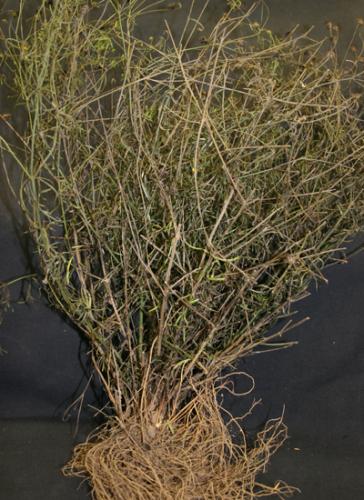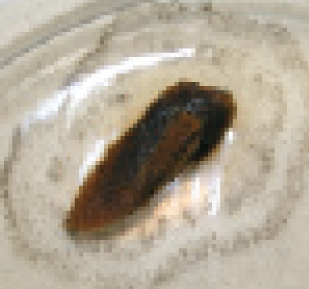Verticillium wilt
July 8, 2015
Wilts
Pathogen
Verticillium alboatrum and V. dahlia.
Hosts include
Aconitum, Aster, Chrysanthemum, Coreopsis, Dahlia, Delphinium, Dianthus, Helichrysum, Papaver, Paeonia and Phlox.

Severe dieback of Coreopsis caused by Verticillium infection. Both stems and crowns are infected by this pathogen.
Symptoms
Wilting and dieback, stunted growth and yellowing, sometimes affecting only part of the plant. Some plants may have discoloration or streaking in the vascular system.
Spread
Verticillium is common in soil, where it survives as mycelium. Verticilium dahlia can also produce microsclerotia, a long-term survival structure. Plants are infected through roots, and infection moves into the vascular system. Wood chips produced from infested trees and used in potting media or as mulch can spread the disease. Disease incidence is less common in plants grown in soilless potting media.

Verticillium produces microsclerotia in soil and infested plant debris. The fungal pathogen readily grows out of infected material that is cultured in a diagnostic lab. The black microsclerotia are a diagnostic feature.
Management
Remove all symptomatic plants; fungicide treatments are generally not helpful. Avoid planting susceptible plants in fields with high populations of Verticillium. Feeding by root and lesion nematodes can increase damage from Verticillium wilt. Plants and soil can be tested for nematodes and the populations quantified by submitting samples to a diagnostic lab. Maintain good control of weed hosts in the field – some weeds are hosts for Verticillium.
Print a PDF of this page: Verticillium wilt



 Print
Print Email
Email

